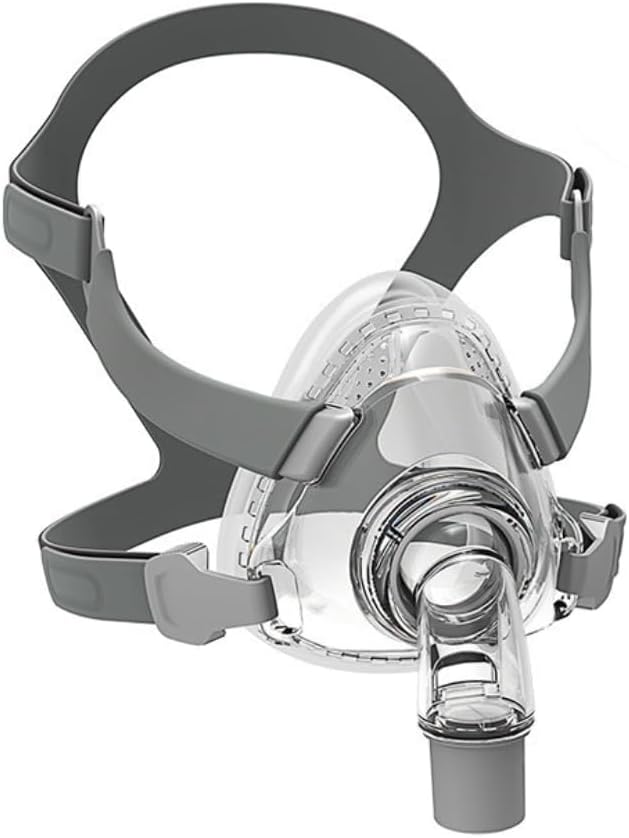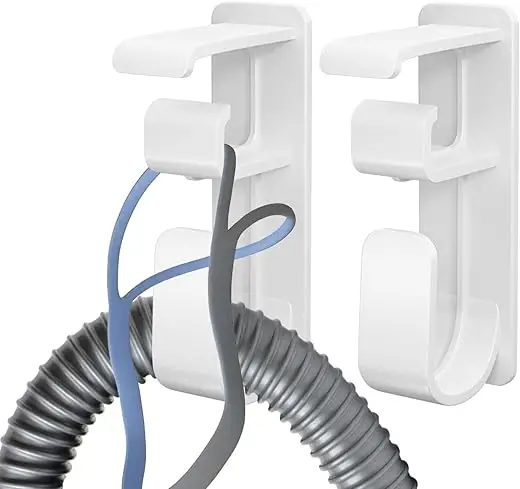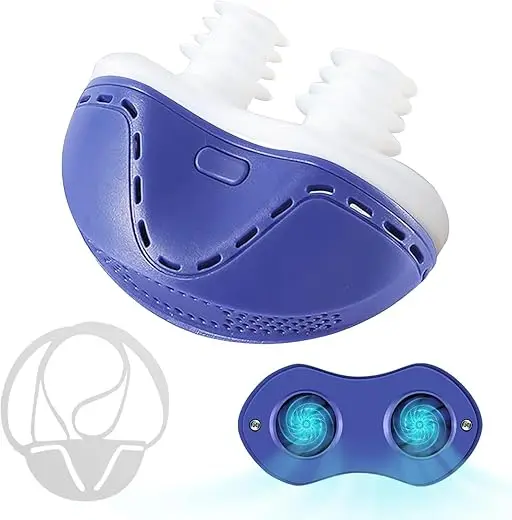Yes, untreated sleep apnea can be fatal. While sleep apnea itself rarely causes immediate death during sleep, it significantly increases your risk of life-threatening cardiovascular events, accidents, and other serious health complications. Understanding these risks and taking action can be lifesaving.
How Sleep Apnea Can Be Life-Threatening
Immediate Risks During Sleep
Oxygen Deprivation Effects
- Severe oxygen drops can stress the cardiovascular system
- Repeated awakening prevents restorative sleep cycles
- Blood pressure spikes occur with each apnea episode
- Heart rhythm disruptions may trigger dangerous arrhythmias
Sudden Cardiac Events Research shows people with severe untreated sleep apnea have:
- 2-4 times higher risk of sudden cardiac death during sleep
- Increased likelihood of heart attacks between midnight and 6 AM
- Higher rates of dangerous heart rhythm abnormalities
- Elevated risk during REM sleep when apnea episodes are most severe
Long-term Fatal Complications
Cardiovascular Disease Untreated sleep apnea dramatically increases risks of:
- Heart failure: 140% increased risk
- Stroke: 60-70% higher likelihood
- Heart attack: 30% increased risk
- High blood pressure: Present in 80% of sleep apnea patients
Metabolic Complications
- Type 2 diabetes: 70% increased risk with severe sleep apnea
- Metabolic syndrome: Accelerated development
- Insulin resistance: Worsening glucose control
- Obesity: Cyclical relationship increases mortality risk
Sleep Apnea Mortality Statistics
Shocking Research Findings
Overall Mortality Risk
- 18-year study: Untreated severe sleep apnea increased death risk by 46%
- 10-year follow-up: Mortality rate 4 times higher in untreated patients
- Young adults: Even mild untreated sleep apnea doubles mortality risk
- Women: Post-menopausal women show particularly high risk increases
Severity-Based Risk Levels
- Mild OSA (AHI 5-15): 8% increased mortality risk
- Moderate OSA (AHI 15-30): 17% increased mortality risk
- Severe OSA (AHI >30): 46% increased mortality risk
- Very severe OSA (AHI >50): Up to 60% increased mortality risk
Age-Related Mortality Patterns
Younger Adults (18-50)
- Higher relative risk compared to older adults
- Accident-related deaths more common
- Sudden cardiac events during sleep
- Often undiagnosed until serious complications occur
Middle-Aged Adults (50-70)
- Peak cardiovascular risk period
- Highest absolute mortality rates
- Multiple comorbidities compound risks
- Critical intervention window for prevention
Elderly (70+)
- Baseline higher mortality makes percentage increases less dramatic
- Treatment benefits still significant
- Comorbidity management becomes crucial
- Quality of life improvements substantial
Warning Signs That Sleep Apnea May Be Life-Threatening
Red Flag Symptoms Requiring Immediate Attention
Cardiovascular Warning Signs
- Chest pain or pressure during sleep
- Irregular heartbeat or palpitations
- Severe morning headaches indicating oxygen deprivation
- Extreme daytime fatigue affecting daily functioning
Neurological Concerns
- Frequent nighttime choking or gasping
- Severe memory problems or confusion
- Difficulty staying awake while driving
- Mood changes including depression or severe irritability
Physical Indicators
- Blue lips or fingernails during sleep (observed by partner)
- Excessive sweating during sleep
- Restless sleep with frequent repositioning
- Morning sore throat from mouth breathing
Emergency Situations
When to Call 911
- Stopped breathing for extended periods during sleep
- Chest pain accompanied by breathing difficulties
- Severe confusion upon waking
- Blue coloration of skin, lips, or fingernails
When to Seek Immediate Medical Care
- New onset of severe symptoms
- Worsening of existing sleep apnea symptoms
- Signs of heart failure (ankle swelling, shortness of breath)
- Stroke-like symptoms (facial drooping, arm weakness, speech problems)
How Sleep Apnea Causes Death: The Mechanisms
Cardiovascular Cascade
Oxidative Stress Pathway
- Repeated oxygen drops create cellular damage
- Inflammation markers increase throughout the body
- Blood vessel dysfunction accelerates atherosclerosis
- Plaque instability increases rupture risk leading to heart attacks
Autonomic Nervous System Disruption
- Sympathetic overdrive from repeated awakenings
- Blood pressure surges with each apnea episode
- Heart rate variability disruption
- Increased risk of dangerous arrhythmias
Metabolic Dysfunction
Hormonal Disruption
- Cortisol elevation from chronic stress response
- Growth hormone suppression affecting tissue repair
- Insulin resistance development
- Leptin resistance leading to weight gain and worsening apnea
Inflammatory Response
- Chronic inflammation affects all organ systems
- Immune system dysfunction increases infection risk
- Accelerated aging at cellular level
- Multi-organ system failure potential
Accident-Related Deaths from Sleep Apnea
Motor Vehicle Accidents
Alarming Statistics
- Sleep apnea patients are 7 times more likely to have car accidents
- Drowsy driving causes 100,000+ crashes annually in the US
- Fatal accident risk increases 2-3 fold with untreated sleep apnea
- Commercial drivers with sleep apnea pose significant public safety risks
Risk Factors for Accidents
- Microsleep episodes while driving
- Delayed reaction times due to fatigue
- Poor concentration and decision-making
- Falling asleep at traffic lights or in traffic
Workplace Accidents
Occupational Hazards
- Heavy machinery operation becomes dangerous
- Healthcare workers make more medical errors
- Pilots and transportation workers pose safety risks
- Construction workers have higher injury rates
Life-Saving Benefits of Sleep Apnea Treatment
Dramatic Risk Reduction with Treatment
CPAP Therapy Outcomes
- Cardiovascular death risk reduced by 62% with consistent CPAP use
- Heart attack risk decreases by 49% after 2.9 years of treatment
- Stroke risk reduced by 31% with effective therapy
- Overall mortality decreases to near-normal levels with adherent treatment
Surgical Intervention Results
- Bariatric surgery for obese sleep apnea patients reduces mortality by 50%
- Upper airway surgery shows 40-60% mortality risk reduction
- Inspire therapy demonstrates significant cardiovascular benefit
- Oral appliance therapy provides substantial risk reduction for mild-moderate cases
Timeline of Treatment Benefits
Immediate Benefits (Days to Weeks)
- Blood pressure begins to normalize
- Oxygen levels stabilize during sleep
- Heart rhythm irregularities decrease
- Daytime alertness improves reducing accident risk
Short-term Benefits (Months)
- Cardiovascular stress markers improve
- Inflammatory levels decrease
- Metabolic function begins to normalize
- Sleep architecture returns to healthy patterns
Long-term Benefits (Years)
- Cardiovascular disease progression slows or stops
- Diabetes control improves significantly
- Overall mortality risk approaches normal population levels
- Quality of life shows sustained improvement
Protecting Yourself: Action Steps to Prevent Death from Sleep Apnea
Immediate Actions
1. Get Properly Diagnosed
- Sleep study with board-certified sleep medicine physician
- Comprehensive evaluation of symptoms and risk factors
- Assessment of cardiovascular and metabolic health
- Severity determination to guide treatment urgency
2. Start Treatment Immediately
- Don’t delay therapy once diagnosed
- CPAP therapy remains the gold standard for most patients
- Alternative treatments if CPAP is not tolerated
- Compliance monitoring to ensure effectiveness
3. Address Contributing Factors
- Weight management through sustainable lifestyle changes
- Alcohol reduction especially before bedtime
- Smoking cessation to improve airway health
- Sleep hygiene optimization
Long-term Protection Strategies
Regular Medical Monitoring
- Annual sleep studies to assess treatment effectiveness
- Cardiovascular screening with cardiologist if indicated
- Blood pressure monitoring and management
- Diabetes screening and control
Lifestyle Optimization
- Maintain healthy weight to prevent worsening
- Regular exercise to improve cardiovascular health
- Stress management to reduce sympathetic nervous system activation
- Consistent sleep schedule to support treatment effectiveness
Emergency Preparedness
- Medical alert bracelet identifying sleep apnea
- Emergency contacts aware of your condition
- Action plan for symptom worsening
- Regular equipment maintenance to prevent treatment failure
Special Populations at Higher Risk
High-Risk Groups Requiring Urgent Attention
Elderly Patients
- Multiple comorbidities compound mortality risk
- Medication interactions may worsen sleep apnea
- Cognitive decline may mask symptoms
- Treatment adherence challenges require family support
Patients with Heart Disease
- Existing cardiovascular disease dramatically increases death risk
- Heart failure patients show highest mortality rates
- Post-heart attack patients need immediate sleep apnea screening
- Atrial fibrillation patients have compounded stroke risk
Commercial Drivers
- Public safety implications of untreated sleep apnea
- DOT regulations require treatment compliance
- Career preservation depends on proper management
- Legal liability issues with untreated condition
When Sleep Apnea Becomes a Medical Emergency
Critical Situations Requiring Hospital Care
Acute Cardiovascular Events
- Heart attack or unstable angina
- Stroke or transient ischemic attack
- Dangerous arrhythmias requiring monitoring
- Heart failure exacerbation
Severe Oxygen Deprivation
- Cyanosis (blue discoloration) during sleep
- Carbon dioxide retention causing confusion
- Respiratory failure requiring ventilatory support
- Altered mental status from severe hypoxemia
Prevention of Emergency Situations
Regular Monitoring
- Home pulse oximetry to track oxygen levels
- Blood pressure monitoring for hypertension detection
- Weight tracking to prevent worsening
- Symptom diary to identify concerning changes
Proactive Medical Care
- Don’t wait for emergencies to seek help
- Regular follow-ups with sleep medicine physician
- Coordinate care between specialists
- Update emergency contacts about your condition
The Bottom Line: Sleep Apnea Can Be Fatal, But It’s Preventable
The stark reality is that untreated sleep apnea can and does kill people through cardiovascular events, accidents, and complications from related health conditions. However, the good news is that effective treatment dramatically reduces these risks and can return mortality rates to near-normal levels.
Key takeaways for protecting your life:
- Seek immediate diagnosis if you suspect sleep apnea
- Start treatment without delay once diagnosed
- Maintain consistent therapy for maximum protection
- Monitor for warning signs of complications
- Address contributing factors like weight and lifestyle
Don’t become a statistic. If you have symptoms of sleep apnea or have been putting off treatment, take action today. Your life may literally depend on it.
Ready to protect yourself? Contact a board-certified sleep medicine physician for evaluation and start your journey toward safer, healthier sleep tonight.
This information is for educational purposes only and should not replace professional medical advice. If you’re experiencing symptoms of sleep apnea or related complications, seek immediate medical attention.



